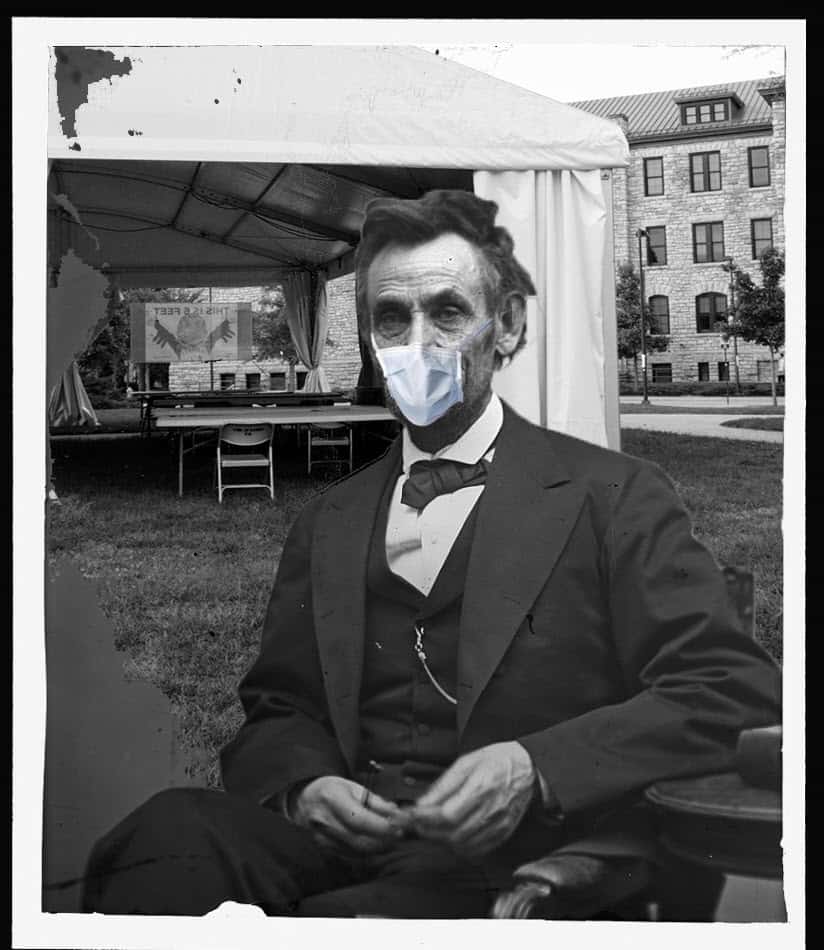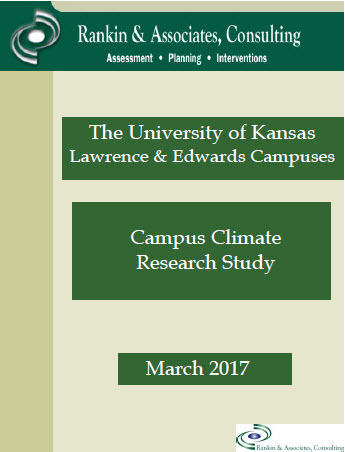By Doug Ward
We called it a non-workshop.

The goal of the session earlier this month was to offer lunch to faculty members and let them talk about the challenges they continue to face three years into the pandemic.
We also invited Sarah Kirk, director of the KU Psychological Clinic, and Heather Frost, assistant director of Counseling and Psychological Services, to offer perspectives on students.
In an hour of conversation, our non-workshop ended up being a sort of academic stone soup: hearty and fulfilling, if unexpected.
Here’s a summary of some of the discussion and the ideas that emerged. I’ve attributed some material, although the wide-ranging conversation made it impossible to cite everyone who contributed.
Mental health
Typically, use of campus mental health clinics jumps in the two weeks before and the two weeks after spring break (or fall break). There is also a surge at the end of the semester. So if it seems like you and your students are flagging, you probably are.

- More people stepping forward. The pandemic drew more attention to and helped destigmatize mental health, encouraging more people to seek help, Frost said. One result is that clinics everywhere are full and not taking new clients. CAPS accepts initial walk-ins, but then students often have to schedule two weeks in advance.
- Small steps are important when students are anxious. Just doing something can seem daunting when anxiety is high, Kirk said, but taking action is important in overcoming anxiety.
- Connection is crucial. Connecting with peers and instructors helps give students a sense of belonging. Grad students seem especially glad to have opportunities to interact in person.
- Making class positive helps students. A feeling of belonging lowers anxiety and makes it more likely that students will attend class.
- International students and faculty have additional stress. Turmoil in home countries can add to stress, and many international students and faculty feel that they have no one to talk to about those troubles. Fellow students and instructors are often afraid to raise the subject, unintentionally amplifying anxieties. Those from Iran, Ukraine, and Russia are having an especially difficult time right now.
- Care for yourself. Frost encouraged faculty to listen to themselves and to seek out things they find meaningful. What is something that replenishes your energy? she asked. Students notice when instructors are anxious or fatigued, and that can add to their own stress. So set boundaries and engage in self-care.
Students seem to be working more
The perception among the group was that students were working more hours to earn money. That has added to missed classes, requests for deadline extensions or rescheduling of exams, and a need for incompletes.

- KU data. In a message after the meeting, Millinda Fowles, program manager for career and experiential learning, provided some perspective. She said that in the most recent survey of recent graduates, respondents said they worked an average of 22 hours a week while at KU. That’s up from 20 hours a week in previous surveys, with some students saying they worked more than 35 hours a week. In the 2021 National Survey of Student Engagement, KU students were asked whether the jobs they held while enrolled were related to their career plans. Responses were not at all: 32.8%, very little: 13.3%, some: 23%, quite a bit: 14.1% and very much: 16.8%.
Role of inflation. The need to work more isn’t surprising. Inflation has averaged 6% to 7% over the past two years, and food prices have jumped 9.5% just in the past year, according to the Bureau of Labor Statistics. According to the rental manager Zillow, the median rent of apartments it lists in Lawrence has increased 18% over the past year, to $1,300. Another site, RentCafe, lists average rent at $1,068, with some neighborhoods averaging more than $1,250 and others below $1,000.
- Hot job market. Bonnie Johnson in public affairs and administration said the job market in that field was so hot that students were taking full-time jobs in the second year of their master’s program. That is wearing them down.
- Effect on performance. Frost said students’ grades tend to go down if they work more than 20 to 25 hours a week.
Flexibility in classes
Many instructors are struggling with how much flexibility to offer students. They want to help students as much as possible but say that the added flexibility has put more strain on them as faculty members. Kirk agreed, saying that too much flexibility can increase the strain on both students and instructors and that instructors need to find the right amount of flexibility for themselves and their classes.

Balance structure and flexibility. Flexibility can be helpful, but students need structure and consistency during the semester. One of the best things instructors can do is to have students complete coursework a little at a time. Too much flexibility signals to students that they can let their work slide. If that work piles up, students’ stress increases, decreasing the quality of their work and increasing the chances of failure.
- Build options into courses. For instance, give students a window for turning in work, with a preferred due date and a final time when work will be accepted. Another option is to allow students to choose among assignment options. For instance, complete six of eight assignments. This gives students an opportunity to skip an assignment if they are overwhelmed. Another option is dropping a low score for an assignment, quiz or exam.
- Be compassionate with bad news, but also make sure students know there are consequences for missing class, missing work, and turning in shoddy work.
- Maintain standards. Students need to understand that they are accountable for assigned work. Giving them a constant pass on assignments does them a disservice because they may then be unprepared for future classes and may miss out on skills that are crucial for successful careers.
Sharing the burden
Ali Brox of environmental studies summed up the mood of the group: It’s often a struggle just to get through everything that faculty members need to do each day. The challenges of students are adding to that burden.
The daily burden of teaching has been increasing for years. In addition to class preparation and grading, instructors must learn to use and maintain a Canvas site, handle larger class sizes, keep up with pedagogy, rethink course materials for a more diverse study body, design courses intended to help students learn rather than to simply pass along information, assess student learning, and keep records for evaluation. In short, instructors are trying to help 21st-century students in a university structure created for 19th-century students.
Johnson added a cogent observation: In the past, professors generally had wives to handle the chores at home and secretaries to handle the distracting daily tasks.
There was one thing those professors didn’t have, though: CTE wasn’t there to provide lunch.
Follow-up readings
At the risk of adding to your burden, we offer a few readings that might offer some ideas for pushing through the rest of the semester.
- Jenny Odell Can Stretch Time and So Can You, Wired (14 March 2023). An interview with the author of How to Do Nothing and Saving Time: Discovering a Life Beyond the Clock. The message: We need to get past the time-is-money guilt complex and take control of our time.
- Course Correction: Students expect ‘total flexibility’ in the pandemic-era classroom. But is that really what they need?, by Beckie Supiano. Chronicle of Higher Education (13 February 2023).
- How Instructors Are Rethinking Late Work, by Carolyn Kuimelis. Chronicle of Higher Education (1 December 2022).
- Your Teaching Doesn’t Need to Be Perfect, by Beckie Supiano. Chronicle of Higher Education (1 September 2022).
- Beating Pandemic Burnout, by Rebecca Pope-Ruark. Inside Higher Ed (28 April 2020).
- Radical Self-Care, by Kerry Ann Rockquemore. Inside Higher Ed (6 May 2015). She suggests asking yourself three questions: What does your body need? What does your mind need? What does your spirit need?
- How to Listen Less, by Kerry Ann Rockquemore. Inside Higher Ed (4 November 2015). Provides three crucial questions for any faculty member: What are my responsibilities as a teacher? What are my students’ responsibilities? Where does my responsibility end and their responsibility begin?
Doug Ward is associate director of the Center for Teaching Excellence and an associate professor of journalism and mass communications.








Recent Comments